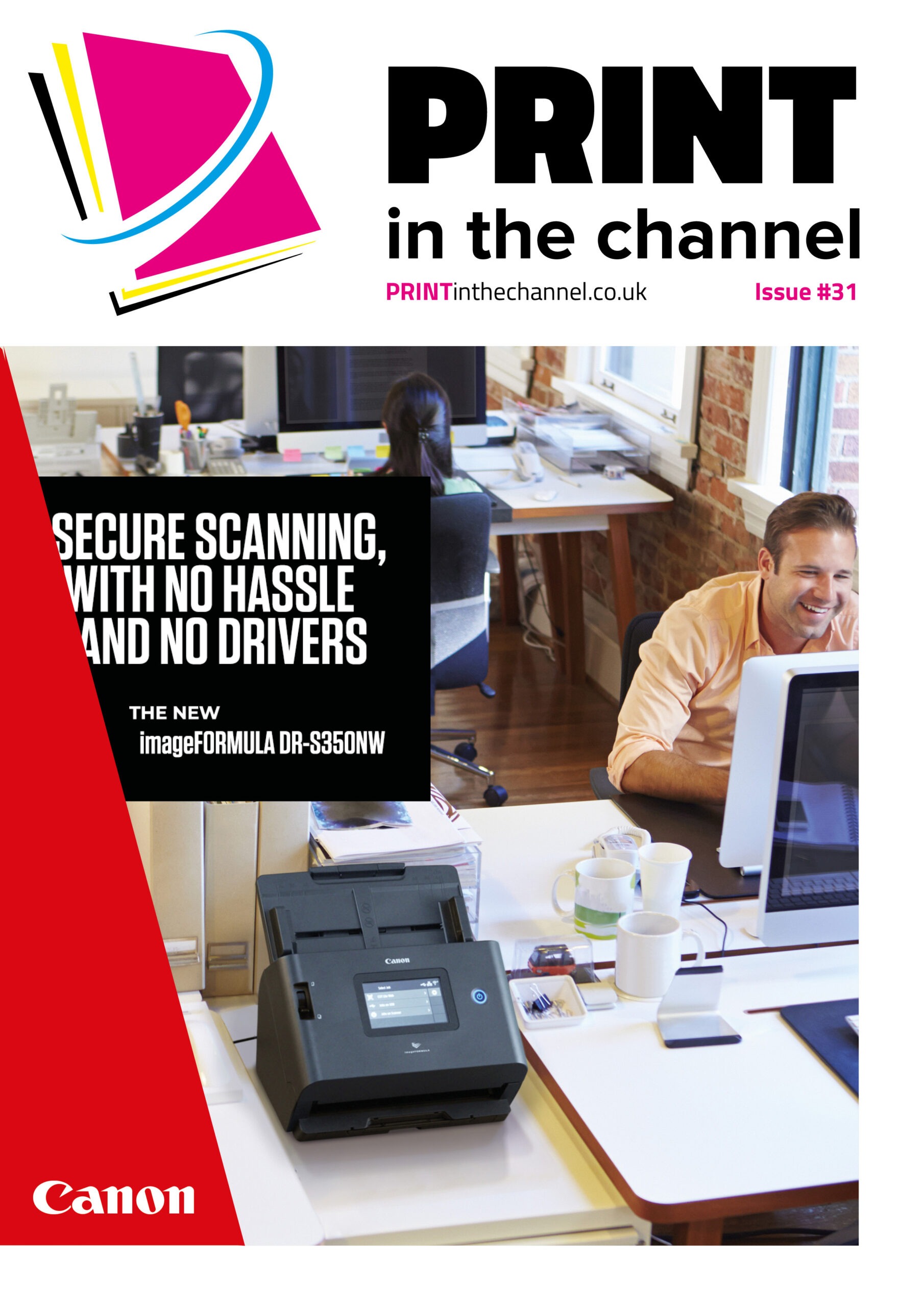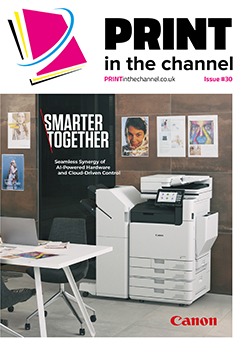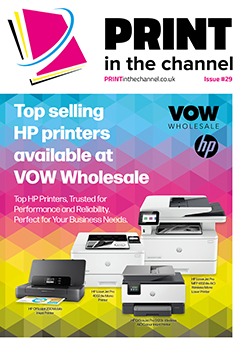Growing awareness of environmental issues, along with a focus on reducing costs, means that energy efficient printers are in increased demand – and manufacturers have responded to this, giving plenty of features for resellers to highlight to customers.
For businesses across the spectrum, being sustainable and environmentally conscious is now not just something that is ‘nice to do’ but a requirement. For those bidding on public sector or large corporate contracts, environmental credentials are a required part of the process.
This, allied to continued high energy prices, means that many businesses are seeking ways to cut their energy usage to save carbon and pounds and are looking at all areas to do this, including printers.
This is something that manufacturers have responded to. “Demand for energy efficient printers from end users has been steadily increasing in recent years,” notes Phillip John, category manager – office at Konica Minolta Business Solutions (UK) Ltd. “With growing awareness and concern about environmental sustainability, consumers are increasingly looking for eco-friendly options when it comes to their office equipment, including printers.
“Energy efficient printers are designed to consume less energy during operation, resulting in lower electricity bills and reduced environmental impact. This is why manufacturers like Konica Minolta are always looking to improve on energy efficiency when launching a new range.
“The demand for energy efficient printers from end users is expected to continue growing as environmental concerns and sustainability considerations become increasingly important in purchasing decisions, as does reducing carbon footprint. Cost savings and financial benefits also play a significant role in the demand for energy efficient printers.
“With running costs and sustainability being closely linked, end users are looking for products that provide both, inevitably making energy efficient printers an attractive option. This dual focus on financial and sustainability aspects reflects a growing awareness and understanding of the need to balance economic considerations with environmental considerations in purchasing decisions.”
Phillip adds that there are many energy saving functions built into printing devices that allow end users to control how their machines work and balance economy with usability and performance. “Features like Sleep Mode and Automatic Power Off allow the printer to enter low power modes when not in use, which helps reduce power consumption and can result in significant energy savings,” he says. “Other features like duplex printing can also help save energy costs in running devices and of course save on paper and waste. All these features are controllable by customers, who can decide on the best mix for their needs.”
Measure and reduce
There are many solutions that help customers to measure, manage and reduce their energy consumption, adds Angie Heather, senior product marketing manager at Ricoh UK.
“For instance, our SmartMeter for print devices provide data on print usage and customers can access green reporting, including paper and energy consumption and environmental sustainability reports which shows CO2 trends,” she says.
“We also provide a Carbon Balanced Production Printing service that lets customers calculate the carbon footprint of each print job, reduce or optimise the process wherever possible and then offset the remaining, unavoidable emissions.
“This is achieved through a three-step process to analyse, optimise and neutralise carbon emissions. First, we look to analyse their current carbon emissions to determine the annual emissions of their printing activity. We then help businesses minimise energy consumption, suggest ways to reduce print waste and review recycling practices, before finally neutralising the remaining emissions generated by Ricoh production printing systems with Certified Emission Reductions. These come from official clean energy projects that fall under the United Nations Framework Convention on Climate Change that we invest in.”
Emphasising credentials
While printers now have many energy efficiency features, there are certain aspects that resellers should look to highlight to customers, whether they are standalone sales or as part of a managed print service (MSP) package, Angie says.
“When it comes to selling energy efficient printers, resellers should be emphasising their ESG and SDG credentials to customers. We’re at a stage where walking the walk and talking the talk are not just valued but expected by consumers. As such, many customers are looking to work with a partner whose principles are based on ESG Goals and who has the drive to continually updated and provide sustainable products built into their DNA.”
Phillip adds that industry standards play a vital role for manufacturers and can help resellers overcome hurdles posed by end users. “Many manufacturers, including Konica Minolta, turn to the ENERGY STAR certification program to ‘certify’ that equipment meets specific energy efficiency guidelines and standards set by the Environmental Protection Agency,” he says.
“To earn ENERGY STAR certification, a printer must meet certain requirements related to energy consumption during various modes of operation, such as printing, standby and idle times. ENERGY STAR-certified printers must also meet additional criteria related to other environmental factors, such as reducing paper waste and using environmentally friendly materials and manufacturing processes. By purchasing ENERGY STAR-certified printers, consumers and businesses can save energy and have confidence that standards are being met.”
Phillip adds that resellers should emphasise exactly what energy saving features are available and what that typically looks like when the device is being used, in Low Power Mode or Sleep Mode. “Manufacturers have their part of play in this too, by providing resellers with all the information they need to give end users accurate details,” he says. “Every device should have an Environmental Data Sheet that not only shows the power consumption in different modes, but also sound emissions and other environmental considerations.”
Peter Dresser, product marketing manager – Ecosys at Kyocera Document Solutions UK, adds that when highlighting energy efficiency as a key differentiator, resellers must look at the power usage specification of the printer or MFP. “But not every device can be the most energy efficient product especially when considering a range of products for a larger MPS installation,” he says. “Then resellers need to look a little deeper than just a product, they should consider the corporate social responsibility commitment of the supplier.”
Increasing efficiency
The trend among manufacturers is that printers will become increasingly energy efficient in the future, Peter adds. “As the efficiency of electronic components improves the efficiency of the device will improve,” he says. “I do feel that manufacturers will eventually reach the limitations of the technology and the improvements that can be made in energy efficiency will level out,” he adds.
“What will the future hold? We may see the biggest energy savings realised in the production process – making it more important than ever that resellers consider the CSR commitments of a supplier and promote them alongside the products and services they are proposing.
“This is a positive for Kyocera and the 3R philosophy – reduce, reuse, recycle – which applies to the research, design, production and operation of its devices. I will go as far to say that in the near future we will start to see a carbon footprint value quoted next to the power values of printing devices.
“At Kyocera we have always placed a large emphasis on continuously reducing the environmental impact of the products we produce, and that includes their power usage in operation.
“For instance, we use low melting point toner to reduce the power used in the fusing process by more than 50%. This reduces waste heat and in turn the number of cooling fans required to deliver even more energy savings for the customer. Intelligent power management is standard across the range, making sure devices are ready to spring
into action when needed and save power when not. During the evenings and weekends, they will sit in power save mode using as little as 0.5 watts, less than a mobile phone charger.”
Angie adds that printer manufacturers are also striving to develop energy efficient technology that guarantees a lower carbon footprint. “We try to achieve this in a variety of ways from supplying higher-yield consumables to reduce transportation, packaging and manufacturing costs, to switching to more energy efficient components and changing consumable composition that fuses at a lower temperature.
“Our goal is to support a circular economy through the effective use of resources. Therefore, we place a lot of value on producing smaller and lighter products, extending the life of parts and devices, reusing products, adopting recycled materials and using recyclable resources.
“There is also a growing trend towards pursuing the reduction of emissions across the entire value chain. We’re striving to improve the energy efficiency of our products, and we’re also encouraging business partners and customers to work together to reduce greenhouse gas emissions. e.g., sustainability optimisation program. This structured, measurable, professional services program uses continuous tracking, benchmarking, and correcting along the way to ensure that driving sustainability is a top priority and that improvements last.”
Phillip adds: “The intention is that as technology moves forwards and components become more energy efficient, that it will have a knock-on effect for the overall energy performance,” he says. “We will always strive to create more efficient machines, supporting the growing demands of our resellers and ultimately the end users’ requirements that require both lower costs and greater sustainability.”









